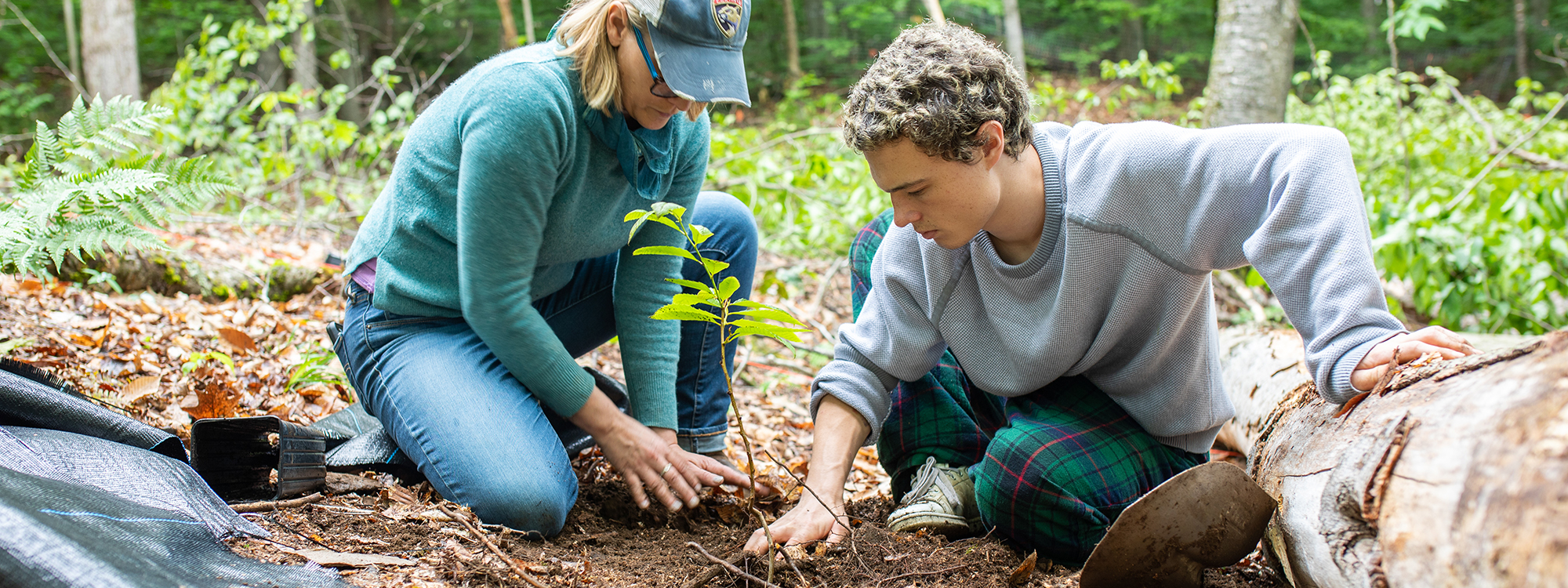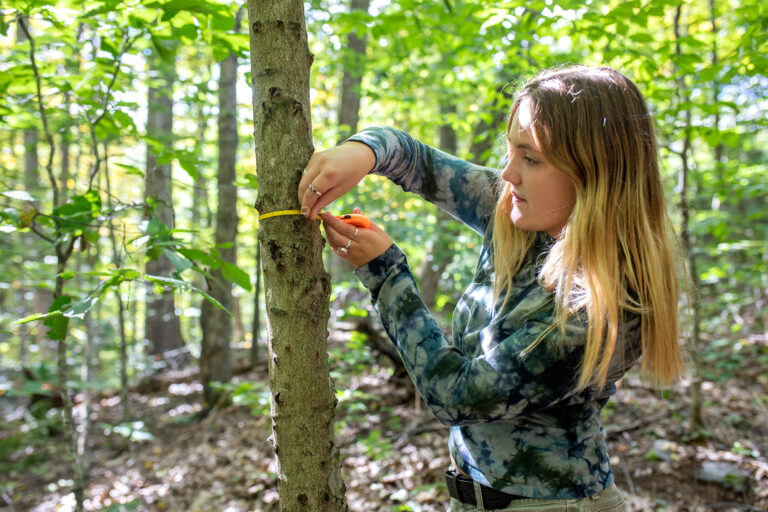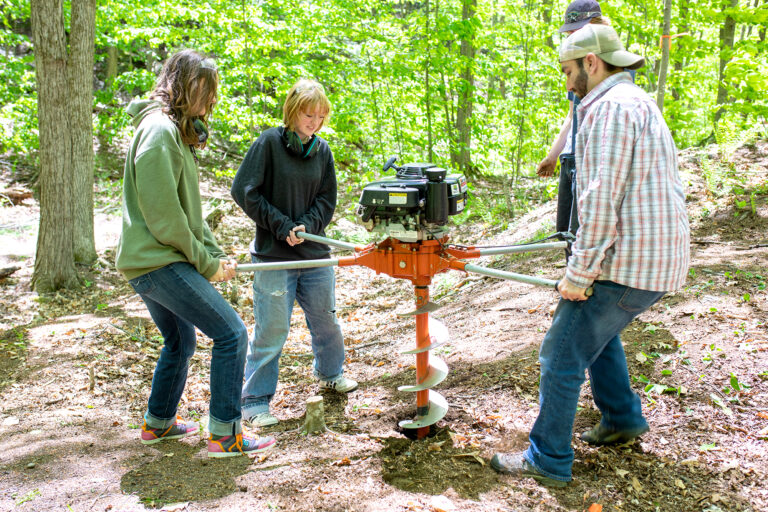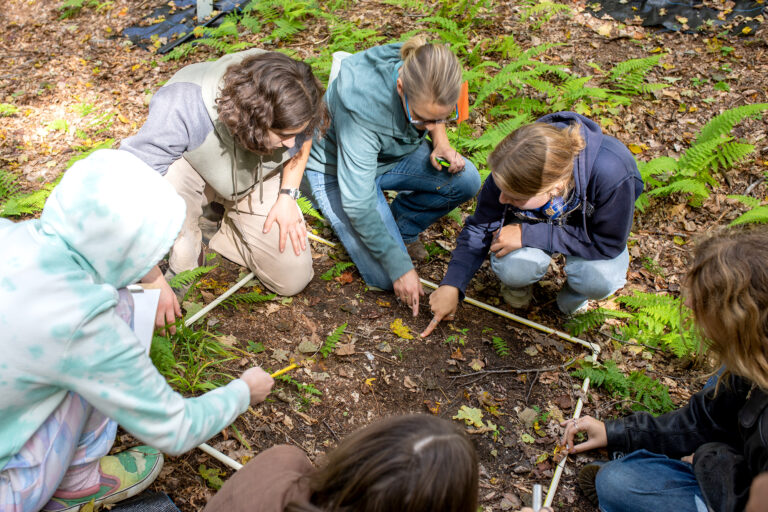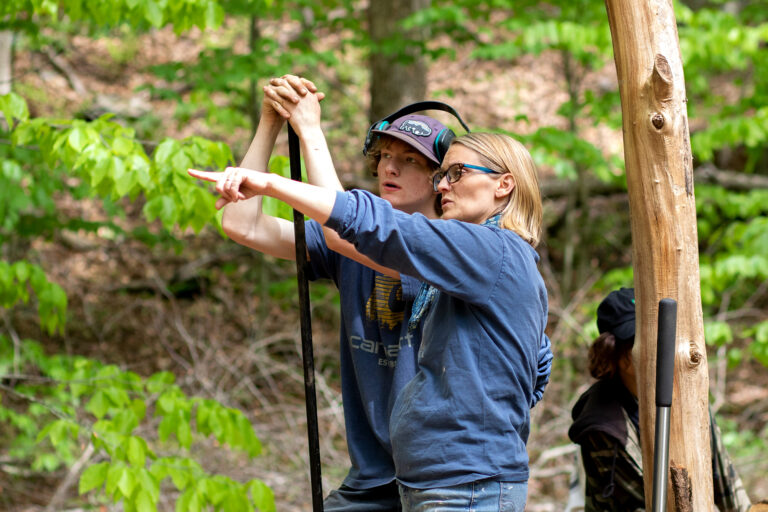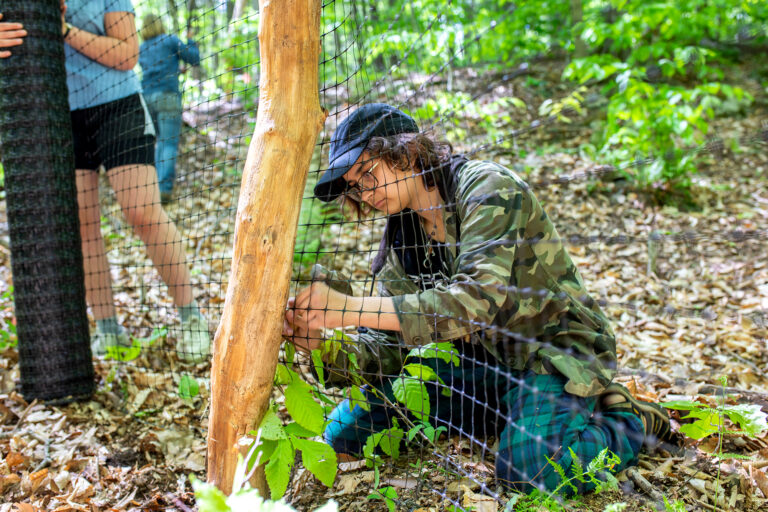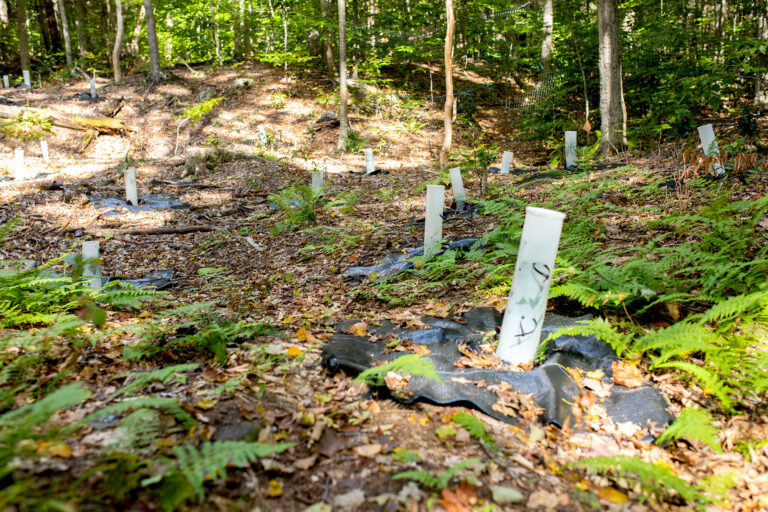From a project week to a 20-year study: students are working with the American Chestnut Foundation to help bring the endangered trees back to Putney’s forests — and beyond.
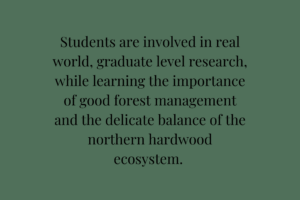 American chestnut trees were devastated by a blight in the early 1900s. While today it is exceedingly rare to find wild American chestnut trees, the American Chestnut Foundation is working to create a blight-resistant variety using genetics from Chinese chestnuts.
American chestnut trees were devastated by a blight in the early 1900s. While today it is exceedingly rare to find wild American chestnut trees, the American Chestnut Foundation is working to create a blight-resistant variety using genetics from Chinese chestnuts.
Thanks to a project week and subsequent independent classes by Henry Stephenson-Ryan ‘23, in 2022 the nonprofit organization donated 125 of their hybridized chestnut seedlings to The Putney School to plant on campus as part of a wide-reaching research project that aims to restore American chestnut trees to our nation.
Real World Field Work
On campus directly west of Middle Ledges Trail are three study plots that are being closely monitored for the next 20 years. Students in the conservation crew Afternoon Activity are maintaining the plots, while students in conservation classes and physical ecology classes are gathering data sets annually to assess changes in the herbaceous layer, regeneration of small trees and shrubs, and longer term changes in the canopy species without the browsing impacts from deer.
The Research in a ‘Nutshell’
Chestnut Blight
Popular for its timber and nutritious nuts, The American Chestnut was once a dominant tree species of the Eastern United States, and an integral part of both human and animal communities. But in the early 20th century a fungal disease known as chestnut blight (Cryphonectria parasitica) was introduced to North America from a ship traveling from eastern Asia. The blight ravaged the chestnut population, killing an estimated 4 billion trees and completely altering the forests of the eastern seaboard.
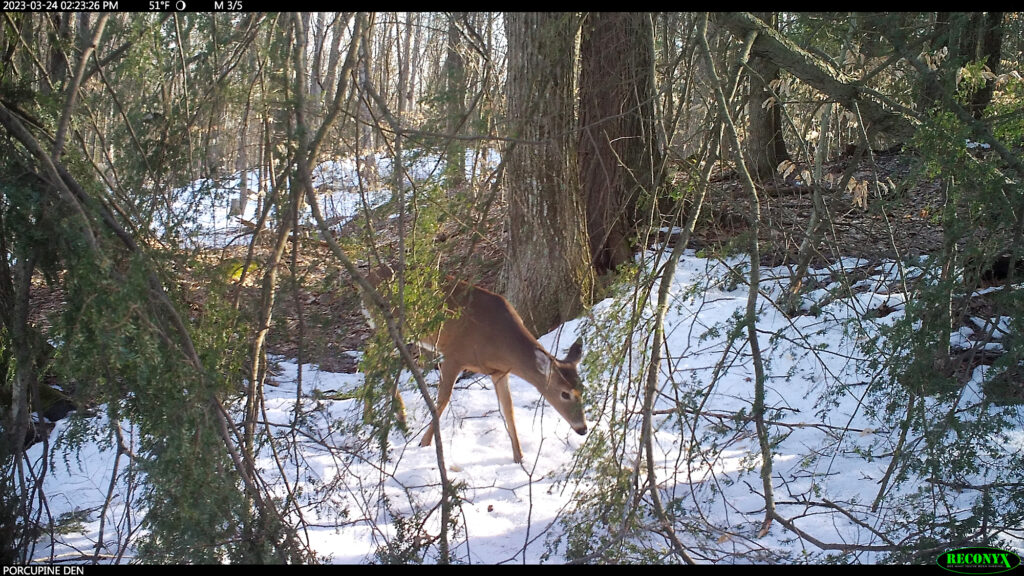
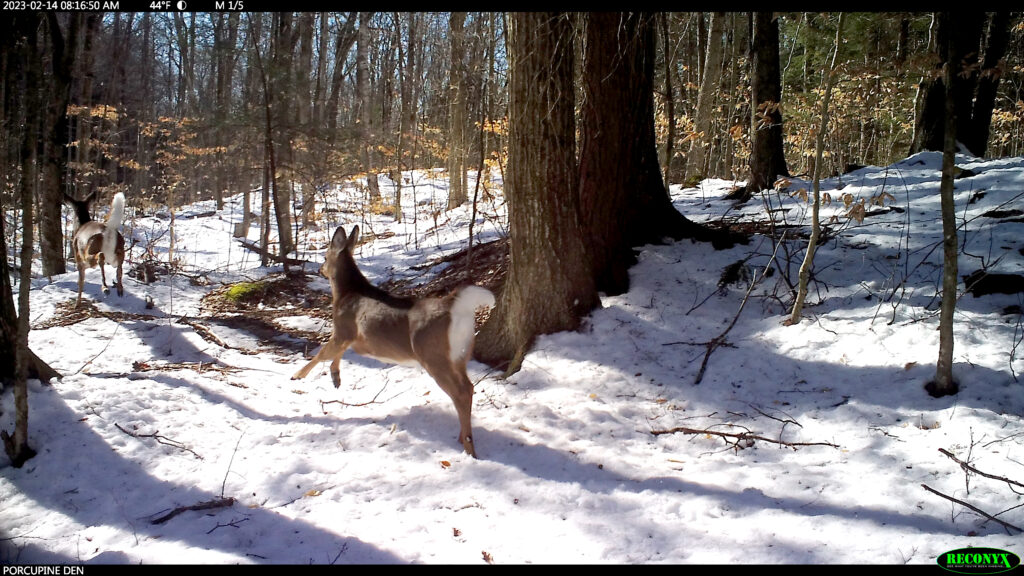
Deer Overpopulation
Around the same time the chestnuts were dying, deer were nearly hunted to extirpation, simultaneously their predators were completely killed off in Vermont. Since then, the deer have rebounded but with no predators to keep them in check they’ve grown exponentially to the point of overpopulation.
In 2020, a Putney student conducted a camera trap study that indicates there’s an estimated 15-30 deer per square mile — far too many for the delicate hardwood ecosystems to sustain.
Beech Bark Disease
As chestnut trees disappeared from the area, beech trees were able to take up residence in that ecological niche. However, the rising deer population has had a significant and noticeable impact on these native woody plants. Along with the deer damaging the forest, beech bark disease has been rampant in recent years and is spurring beech trees to take over parts of the forest as the diseased adult trees send up genetic copies of themselves. This, in addition to deer browse, has caused significant changes to the understory diversity of forests impacted by both issues since beech is not a desired species for deer.
Putney’s Study Plots
Putney’s research is tied to the 125 American chestnut hybrids in the hopes that they’ll thrive and take back the ecological niche that the beech trees now fill. This said, the primary focus of the study is on how the high deer population affects the variety of the plants and trees found in the plots. It also explores the health of the beech trees, the growing deer population, and the balance between all three.
Plot A — Plot A is fenced in by an 8-foot polymer fence to keep deer out. The vegetation has been left as is to study the growth of beech trees without the impact of deer.
Plot B — Also fenced in by an 8-foot deer fence to keep deer out. All the beech trees have been removed and replaced with the 125 American chestnut hybrids.
Plot C — The control plot. It is not fenced and was left as is in order to compare the woody plant growth rates of beech trees where deer are pressuring the forest vs. where they are not.


